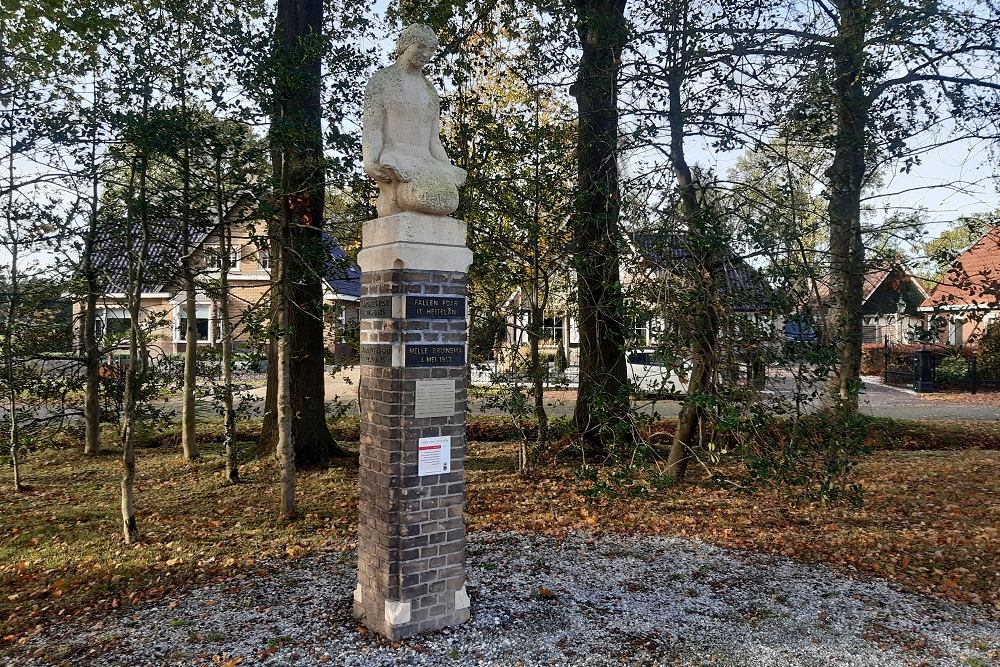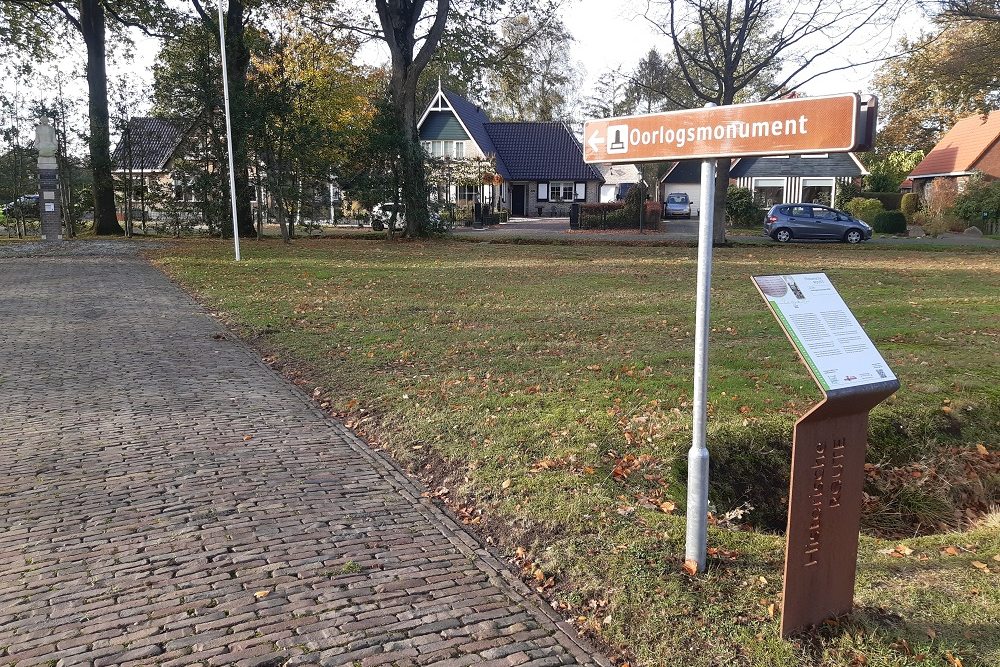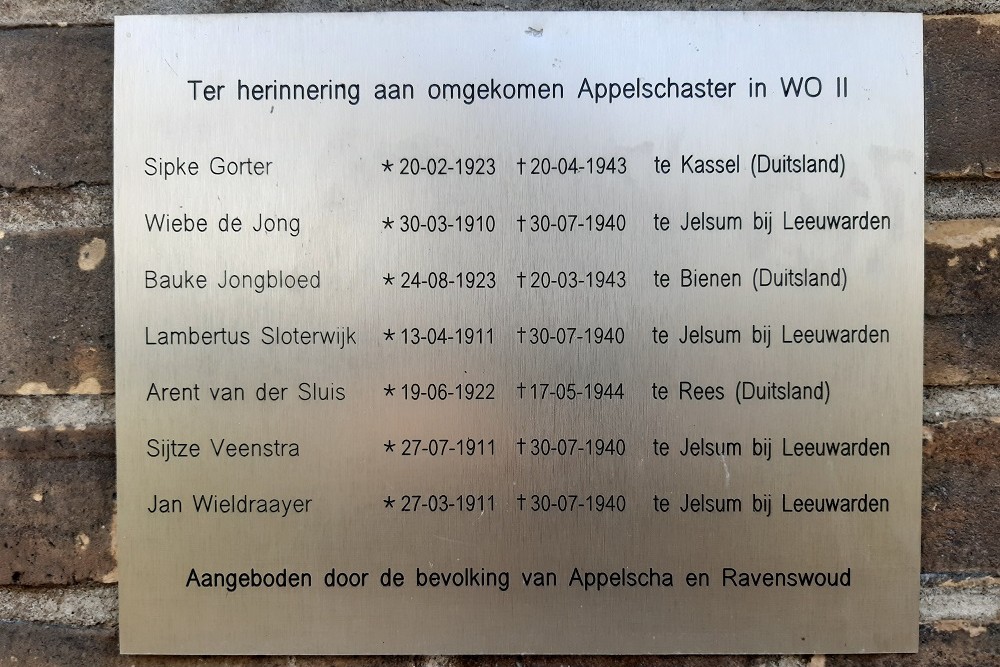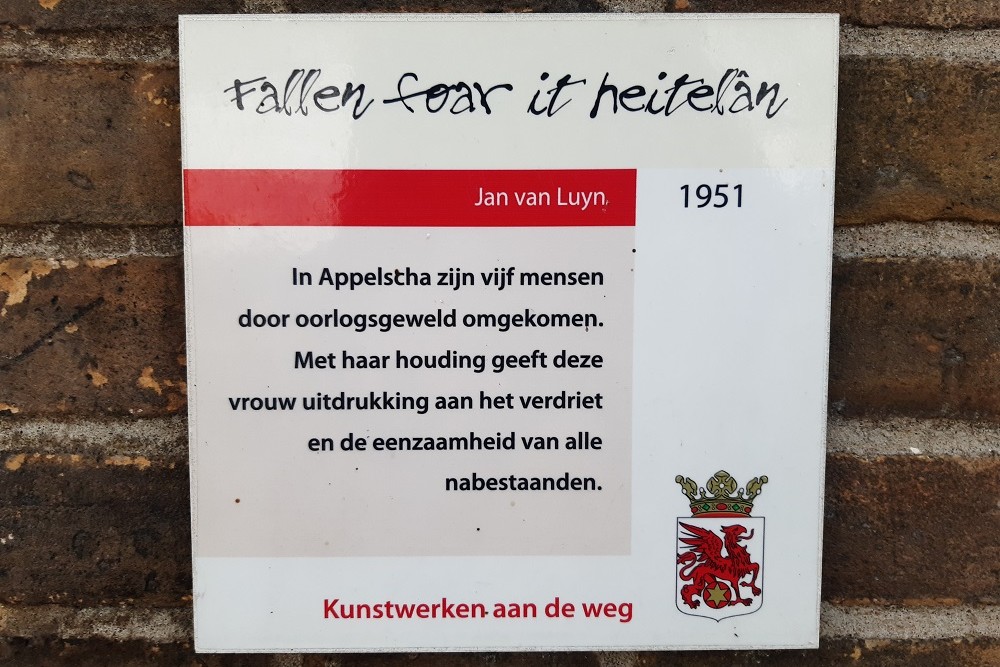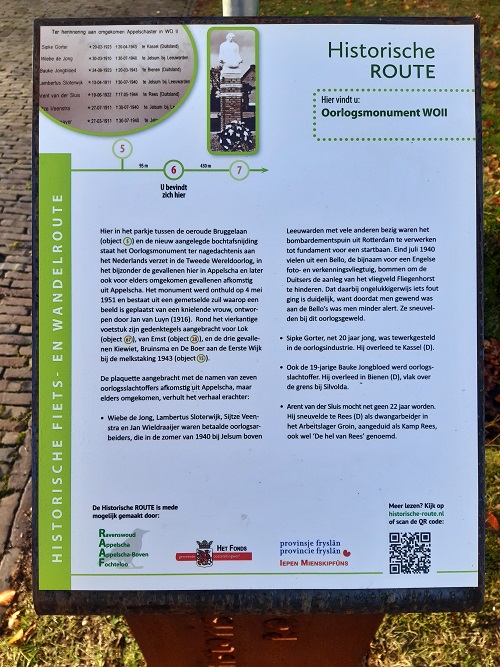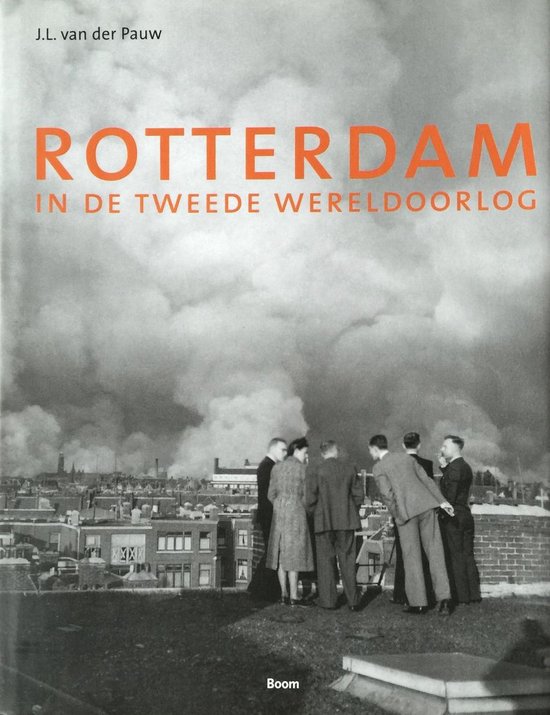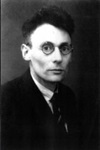War Memorial Appelscha
The text on this monument, unveiled in 1951, reads:
FALLEN FOR IT HEITELÂN
JITSE KIEWIET 4 MAY '43
ANNE DE BOER 4 MAY '43
MELLE BRUINSMA 4 MAY '43
ANDRIES LOK 20 MAY '44
MARINUS VAN EMST 12 AUG. '44
May Strike
During the milk strike in May 1943, farmers stopped supplying their milk to the factories. They gave or threw it away. The occupier responded to this, among other things, by imposing a ban on gatherings. Some young men who were standing near a bridge on the Eerste Wijk ran away after shots were fired in their direction. Three of them were then shot in the back from a raid vehicle while fleeing.
Anne de Boer, born August 4, 1907, Jitse Kiewiet, born April 7, 1922 and Melle Bruinsma, born November 20, 1923, were killed.
Silbertanne murder
Andries (Anje) Lok, born December 8, 1903 in Siegerswoude, was head of the school in Ravenswoud. He was a staunch supporter of nonviolent resistance. During the war, Lok helped people in hiding by providing them shelter (for example in the attic of the school) and ration cards. Hans Slosch, a Jewish boy, lived at home with him. A fellow teacher at Lok's school was an NSB member, which made Lok's resistance work more difficult. Hans was therefore housed in a safer place. The colleague was aware of Lok's activities and passed this on to the occupier.
In the night of 19 to 20 May 1944, the doorbell rang at Lok. Two men in civilian clothes, who identified themselves with SS IDs, asked Lok to come along to give a witness statement in Assen. His wife, daughter (11 years old) and son watched Lok as he went with the men. The men said reassuringly to Lok's wife that her husband would be home soon. The men then shot Lok dead at the garden gate. The men then ran to a car and drove off with the lights off.
It later turned out that this drama was a retaliation for the attack on land ranger Kees Hartenhof. These kinds of 'Aktion Silbertanne' murders took place between September 1943 and September 1944. For an attack on one Dutch collaborator, often three 'Deutschfeindliche' Dutchmen were shot without any form of trial. Within a year, 45 anti-German Dutchmen were murdered in this way. Eleven others survived the attacks.
The Forester
Marinus van Emst was born on January 12, 1894 in Vierhouten. He was a forester by profession and also a councilor for the Christian Historical Union in the municipality of Ooststellingwerf. As a member of the resistance, he was an employee of the National Organization for help to people in hiding. He made shelters for Jews and other people in hiding. He also mapped the forest for allied paratroopers. His resistance work meant that Van Emst had to go into hiding in the summer of 1944. On August 12, 1944, his daughter Marianne's birthday, he came home and would spend the night because his wife had her birthday the following day. He was then arrested at home by the occupier. He was taken to the police commander on Bruggelaan and interrogated there. Van Emst did not let anything go and was then taken to the woods near camping Us Blau Hiem, where he was shot.
Van Emst is buried in the Dutch Reformed cemetery in Appelscha, where there is a monument and a street and square are named after him.
Do you have more information about this location? Inform us!
Source
- Text: Gerrit Hazenberg
- Photos: Cor Keuning
- Spanvis.nl
- Comité 4-5 mei
- Trouw
- Ravenswoud.nl
Related books
Nearby
Museum
Point of interest
Monument
- War Memorial Stokersverlaatbrug Appelscha - Appelscha
- Memorial Marinus Van Emst - Appelscha
- Monument Free Socialists - Appelscha
Cemetery
- Dutch War Graves Oosterwolde - Oosterwolde
- Commonwealth War Graves Hoogersmilde - Hoogersmilde
- Dutch War Graves Hoogersmilde - Hoogersmilde
Remembrance Stone
- Stumbling Stone Rijksweg 85 - Smilde
- Stumbling Stone Bosweg 4 - Smilde
- Stumbling Stone Rijksweg 235 - Smilde
